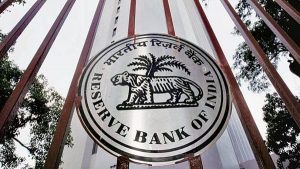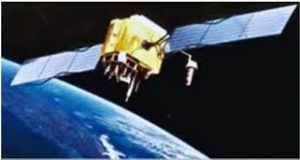Today’s Current Affairs: 1st July 2025 for UPSC IAS exams, State PSC exams, SSC CGL, State SSC, RRB, Railways, Banking Exam & IBPS, etc
Table of Contents
Mud Volcano:

The Wandan mud volcano recently erupted in Taiwan, sending bubbling mud shooting into the air as locals ignite ejected gases with burning rags.
- A mud volcano is a small volcano-shaped cone of mud and clay, of height usually less than a few meters, and often a few decimeters.
- It is built by a mixture of hot water and fine sediment that either pours gently from a vent in the ground, like lava fluid flow, or is ejected into the air like a lava fountain by escaping volcanic gas and boiling water.
- The craters are usually shallow and may intermittently erupt mud.
- These eruptions continuously rebuild the cones, which are eroded relatively easily.
- The term “mud dome” is similar to that of mud volcano. It refers to land formations created by geologically excreted liquids and gases, with temperatures much cooler than comparable igneous processes.
- The gases released are usually methane, carbon dioxide, and nitrogen, and the liquid is usually water, frequently acidic or salty.
- Mud volcanoes, also known as “sedimentary volcanoes” or “gas-oil volcanoes,” are close cousins to magmatic volcanoes.
- Like magmatic volcanoes, they can erupt powerfully and hurl flames to great heights, sometimes even several hundred meters.
- They spew out millions of cubic meters of hydrocarbon gases and tons of mud.
- Mud volcanoes also exist on the floor of the sea and can form islands and banks that alter the topography and shape of the coastline.
- Approximately 1,000 mud volcanoes have been identified on land and in shallow water.
- In Europe and Asia, mud volcanoes are known to exist in southeastern Ukraine, Italy, Romania, Azerbaijan, Iran, Pakistan, Indonesia, and China.
- In North and South America, mud volcanoes have been documented in Alaska, California, the Island of Trinidad, Venezuela, and Colombia.
Financial Stability Report : RBI

The Reserve Bank of India (RBI) recently released the Financial Stability Report for June 2025.
- It is a biannual report released by the Reserve Bank of India (RBI).
- It reflects the collective assessment of the Sub-Committee of the Financial Stability and Development Council (FSDC) on the resilience of the Indian financial system and risks to financial stability.
Highlights of FSR for June 2025:
- The Indian economy remains a key driver of global growth on the back of sound macroeconomic fundamentals and prudent policies.
- The headwinds from protracted geopolitical tensions, elevated uncertainty and trade disruptions, and weather-related uncertainty pose downside risks to growth.
- The non-performing loans ratio is currently at a multi-decadal low, and the economy and financial system are relatively well positioned to bear the tariff-induced shocks.
- The report said that the gross non-performing asset (GNPA), which is currently as of March 2025 at 2.3% levels, in the baseline scenario, could increase to 2.5% level.
- GNPAs for 46 banks accounting for 98 percent of the total assets of scheduled commercial banks (SCBs), may rise to 2.6 percent by March 2027.
- Capital adequacy across the banking sector remains well above regulatory thresholds, giving banks sufficient buffers to withstand adverse scenarios.
- Even under severe stress test conditions, the capital adequacy ratios of banks would stay comfortably above minimum requirements, a strong signal of the sector’s preparedness to absorb economic shocks.
- India’s growth is largely dependent on domestic demand, and the outlook for food inflation remains favorable as the prices have started to soften and the crop production is at a record level.
- On the domestic front, the financial system remains stable, with healthy balance sheets of both banks and non-banking financial institutions.
- NBFCs remain healthy with good capital buffers, robust earnings, and improving asset quality.
Space-Based Surveillance-III Programme:

The Union Government recently ordered the fast-tracking of the launch of 52 dedicated surveillance satellites under the SBS-III programme.
- Space-Based Surveillance-III Programme (SBS-III) was approved in October 2023, by the Prime Minister-led Cabinet Committee on Security to develop next-generation satellites over the next decade.
- It involves the construction and launch of 21 satellites by India’s space agency, ISRO, and 31 by three private companies.
- The first satellite is expected to be launched by April 2026, with the full constellation targeted for completion by the end of 2029.
- The aim of SBS-3 is to cover much larger areas of China and Pakistan, as well as the Indian Ocean Region, with shorter revisit times (interval between two consecutive surveillance sweeps of the same location) and much better resolution. The space doctrine is also being fine-tuned.
- It enables the Indian Army, Navy, and Air Force to monitor adversary movements deep inside hostile territory — including airfields, bases, and staging areas.
- These new satellites will utilise AI and will be able to interact with each other and thus gather GeoIntelligence more effectively.
- A crucial aspect of the project is the planned transfer of Small Satellite Launch Vehicle (SSLV) technology from ISRO to private players, which will allow for rapid satellite launches during emergencies.
- The satellites will operate in both low Earth and geostationary orbits, providing comprehensive coverage and countering China’s advanced anti-satellite capabilities, including kinetic and electronic warfare systems.
- The project cost of SBS-III is pegged at ₹26,968 crore.
- The Defence Space Agency (DSA), which functions under the Integrated Defence Staff (IDS) of the Ministry of Defence, is leading the project.
- Formed in 2019, the DSA replaced the Integrated Space Cell and now oversees India’s military space operations.
- It coordinates with ISRO, DRDO, and the armed forces to develop space warfare strategies and safeguard national space assets.
Animal Discoveries and Plant Discoveries 2024:

The details of new Animal Discoveries and Plant Discoveries and new records were released by the Union Minister for Environment, Forest, and Climate Change recently.
- The Zoological Survey of India (ZSI), the country’s premier institution for faunal exploration and research, publishes Animal Discoveries every year detailing the new discoveries of fauna.
- Similarly, the Botanical Survey of India (BSI), the country’s premier organisation for plant research and taxonomy, publishes Plant Discoveries every year detailing the new discoveries of flora.
Highlights of 2024 Reports:
- India added 683 new species to its fauna in the year 2024, which included 459 new species and 224 species new records.
- The country also added 433 taxa of flora during the same period, which included 410 species and 23 infra-specific taxa of plants.
- The maximum number of new discoveries of fauna in 2024 was recorded from Kerala—with 101 species (80 new species and 21 new records)—followed by Karnataka—82 (68 new species and 14 new records). Tamil Nadu recorded 63 discoveries, with 50 new species and 13 new records.
- In the eastern and northeastern parts of the country, Arunachal Pradesh recorded 72 animal discoveries (42 new species and 30 new records),
- Meghalaya 42 new discoveries (25 new species and 17 new records), and West Bengal 56 new discoveries (25 new species and 31 new records).
- Andaman and Nicobar Islands, another biological hotspot in the country, recorded 43 new discoveries of fauna from the region, which included 14 new discoveries of fauna and 29 new records.
- The significant faunal discoveries for the year 2024 include two new genus and 37 species of reptiles and five new species of amphibians.
- The significant discovery of reptiles included Dravidoseps gouensis, belonging to the new genus, and Anguiculus dicaprioi is a member of the Colubridae family.
- In terms of plant discoveries, the highest number of flora discovered was from Kerala (58), followed by Maharashtra (45) and Uttarakhand (40).
- The new plant discoveries for 2024 record 154 angiosperms, 4 pteridophytes, 15 bryophytes, 63 lichens, 156 fungi, 32 algae and 9 microbes.
- The hotspot regions, such as the Western Ghats and the North-Eastern regions, have contributed 35% of total discoveries.
- The plant discoveries for the year 2024 include wild relatives of many potential horticultural, agricultural, medicinal, and ornamental plants such as begonia, impatiens (balsams), legumes, zingibers, orchids, etc.
- In terms of flora, the significant discoveries include important orchid species such as Bulbophyllum gopalianum, Coelogyne tripurensis, Gastrodia indica, and Gastrodia sikkimensis.
- Several new species belonging to important plant groups such as legumes, zingers, grasses, etc, were also discovered.
Altermagnets : Study

Scientists have spotted a fascinating and previously unobserved electrical and thermal transport phenomenon in the high-quality single-crystalline altermagnet CrSb.
- Altermagnets are a newly discovered class of magnetic materials that enjoy the best properties of both ferromagnets and antiferromagnets.
- They do not show any net magnetism externally, but deep inside, their electrons behave in ways that can be incredibly useful—especially for futuristic technologies like spintronics (manipulating the spin of electrons instead of their charge).
- Altermagnets defy conventional norms by embodying a dual nature—resembling antiferromagnets with zero net magnetization and ferromagnets with non-relativistic spin splitting.
- This unique behavior emerges from the intricate interplay of atoms within the crystal structure.
- Additionally, altermagnets exhibit a unique spin polarization. The term “spin polarization” means that a preponderance of electron spins tends to align in a particular direction.
- The spin polarization is noteworthy in altermagnets because it occurs in the physical arrangement of atoms (real space) and in the momentum space, where the distribution of electron spins in the material is considered.
- The researchers believe that altermagnets could have a pivotal role in spin caloritronics, a field of research that explores the interplay between spin and heat flow, which are not achievable with ferromagnets or antiferromagnets.
- This field has potential applications in developing new technologies for information processing and storage.
At Sea Observer Mission:

QUAD nations launched first-ever ‘At Sea Observer Mission’ to boost maritime cooperation.
- At Sea Observer Mission was launched by the QUAD nations i.e the Coast Guards of India, Japan, the United States, and Australia
- It aims to stride toward strengthening maritime security and interoperability in the Indo-Pacific, under the Wilmington Declaration.
- Two officers, including women officers from each country have embarked on board US Coast Guard Cutter (USCGC) Stratton, which is currently sailing to Guam.
- The cross-embarkation mission marks an unprecedented step in QUAD Coast Guard collaboration, enhancing joint readiness, operational coordination, and domain awareness in support of a Free, Open, Inclusive, and Rules-Based Indo-Pacific.
- The mission reflects the vision laid out at the QUAD Leaders’ Summit in September 2024 and signifies a deepening of operational ties between the Indian Coast Guard (ICG), Japan Coast Guard (JCG), US Coast Guard (USCG), and Australian Border Force (ABF).
- India’s participation reinforces its strategic maritime vision of SAGAR (Security and Growth for All in the Region) and complements national efforts under the Indo-Pacific Oceans Initiative (IPOI), with an emphasis on capacity-building, humanitarian outreach, and maritime rule of law.
- The QUAD at Sea initiative sets the foundation for a ‘QUAD Coast Guard Handshake,’ fostering stronger trust, coordination, and collective resilience amid evolving maritime challenges in the region.
Hul Diwas:
The Prime Minister paid a heartfelt tribute on Hul Diwas (30th June), commemorating the start of the Santhal uprising and honoring the legacy of Sido-Kanhu, Chand-Bhairav, Phulo-Jhano, and other tribal martyrs who resisted colonial oppression.Santhal Hul was a tribal revolt and India’s first structured war against British oppression, launched in 1855, two years before the 1857 Revolt, aimed at resisting economic exploitation and land alienation.
Leaders & Unity: Led by Sidhu and Kanhu, the revolt united 32 castes/communities, showcasing rare tribal solidarity against colonial forces. It was sparked by the 1832 Damin-i-Koh settlement in the Rajmahal hills, where Santhals (displaced from Bengal) faced land-grabbing, bonded labour (kamioti/harwahi), and systemic oppression by British-backed zamindars. It led to the passage of Santhal Parganas Tenancy Act, 1876 (SPT Act) and later Chota Nagpur Tenancy Act, 1908 (CNT Act). The SPT Act (1876) prohibits transfer of Adivasi land to non-Adivasis, ensuring Santhal land rights, while the CNT Act (1908) restricts sale of Adivasi and Dalit land, allowing transfers only within the same caste and area with Collector’s approval.
Digital Fossil-Mining and Evolution of Squids:
Using digital fossil-mining techniques, scientists have uncovered that squids dominated ancient oceans 30 million years earlier than previously believed, shedding new light on their deep evolutionary history.Researchers digitally identified at least 40 species from two modern squid groups—Oegopsida (deep-sea squids) and Myopsida (coastal squids)—in 110–70 million-year-old Cretaceous concretions found in Japan.
Digital fossil-mining involves using technologies like 3D scanning, CT imaging, AI, and GIS to extract and analyze fossil data without damaging original fossils.Squids, belonging to the Cephalopod class (with octopuses and cuttlefish), have a soft mantle, an internal shell (gladius), a parrot-like beak, two tentacles for capturing prey, and eight arms for holding it. Like all cephalopods, they have three hearts and use jet propulsion for movement.
Ladakh Hosts Its First Astro Tourism Festival:
Ladakh marked a significant step in promoting science-based tourism with the successful conclusion of its first-ever Astro Tourism Festival in Leh. Organized by the Tourism Department of Ladakh in collaboration with the Indian Institute of Astrophysics (IIA), Bangalore, the two-day festival aimed to harness Ladakh’s unique natural advantages—such as high altitude, dry climate, and low light pollution—to position the region as a leading destination for astro tourism. The event offered a blend of educational sessions and hands-on celestial observation, captivating tourists, astronomy enthusiasts, and science lovers alike.
SBI celebrates 70 years since its formation in 1955:
July 1 marks a historic milestone in India’s financial landscape as the State Bank of India (SBI) celebrates its 70th anniversary. Established in 1955, SBI is more than a banking institution—it’s a symbol of India’s economic journey and a trusted partner in national development. From financing small farmers to funding global corporations, SBI’s reach spans both geography and generations. The roots of SBI date back to 1806, with the founding of the Bank of Calcutta, followed by the Bank of Bombay (1840) and Bank of Madras (1843). These merged in 1921 to form the Imperial Bank of India After independence, in line with the First Five-Year Plan’s emphasis on rural development, the Imperial Bank was nationalised on July 1, 1955 through the State Bank of India Act. This move laid the foundation for India’s largest public sector bank.
Goods and Services Tax Day 2025:
Every year on July 1st, India celebrates Goods and Services Tax (GST) Day to commemorate the implementation of one of the country’s most transformative economic reforms. Introduced on July 1, 2017, the Goods and Services Tax subsumed multiple indirect taxes and unified the Indian market under a single taxation system. The observance began in 2018, marking the first anniversary of GST’s rollout.The Goods and Services Tax (GST) is a comprehensive, destination-based indirect tax levied on the supply of goods and services. It is designed to be a single tax that flows through the entire supply chain from the manufacturer to the end consumer with provisions for input tax credit at each stage.
Bank Lending to Industry Slows to 4.9%:
The Reserve Bank of India (RBI) reported a significant slowdown in bank credit growth to various sectors, including industry, services, and personal loans. According to the RBI’s sectoral credit report for the fortnight ended May 30, 2025, bank lending to industry grew by only 4.9%, a stark drop compared to 8.9% during the same period last year. The deceleration spans multiple categories and suggests changing credit dynamics amid macroeconomic uncertainties and evolving financial strategies.
India’s Bank GNPAs Fall to Multi-Decade Low of 2.3%:
The Reserve Bank of India (RBI) has reported that gross non-performing assets (GNPAs) in the banking sector declined to a multi-decade low of 2.3% in March 2025, down from 2.6% in September 2024. However, the central bank warned that GNPAs could rise to 2.6% by March 2027, according to its biannual Financial Stability Report (FSR). The drop in bad loans reflects sustained improvement in asset quality, particularly post-asset quality review (AQR) reforms.RBI’s June 2025 Financial Stability Report has highlighted a substantial decline in gross NPAs to a multi-decade low. The report warns of a moderate uptick in GNPAs over the next two years. It reflects the long-term improvement in banking sector asset quality following AQR and capital infusion. Significant policy implications for banking health, credit growth, and financial resilience.
Reliance Infra and Coastal Mechanics Launch Defence MRO Hub in Maharashtra:
Reliance Defence, a subsidiary of Reliance Infrastructure, has partnered with U.S.-based defence contractor Coastal Mechanics Inc. (CMI) to establish a cutting-edge Maintenance, Repair, and Overhaul (MRO) facility in Maharashtra. The joint venture will focus on upgrading air and land defence platforms for the Indian armed forces and export clients, aligning with the government’s push for indigenous defence capability under the “Atmanirbhar Bharat” initiative.The announcement of this joint venture is significant due to India’s growing emphasis on self-reliant defence production. A ₹20,000 crore opportunity in India’s defence MRO and upgrade market. Increasing demand for lifecycle support of legacy defence systems. Coastal Mechanics’ strong track record with the US Department of Defence.
SBI to Solarize 4 Million Indian Homes by 2027:
The State Bank of India (SBI) has announced its ambitious goal of solarizing 4 million homes by the financial year 2026–27. This initiative is part of SBI’s broader sustainability vision aligned with India’s Net Zero 2070 commitments. The announcement came as SBI celebrated its 70th anniversary, underscoring its legacy and future vision as a leader in not only banking but also national development.SBI declared a nationwide solar rooftop programme aimed at covering 4 million homes with solar power by FY27. The announcement coincided with the bank’s 70th anniversary, reinforcing its commitment to environmental responsibility. This comes as India aggressively pursues its climate targets under the Paris Agreement and aims for Net Zero emissions by 2070.
India’s GST Collections Hit Record ₹22.08 Lakh Crore in FY25:
India’s Goods and Services Tax (GST) regime, implemented in 2017, has shown remarkable growth in revenue collections. In a landmark achievement, gross GST collections reached a record high of ₹22.08 lakh crore in the financial year 2024–25 (FY25), doubling from ₹11.37 lakh crore in FY21. This milestone not only highlights India’s economic recovery and robust consumption trends but also reflects the efficiency and maturity of the unified tax system.India has achieved its highest-ever annual GST revenue in FY25, marking eight years since the GST rollout. The consistent rise in monthly and yearly GST collections demonstrates the system’s growing effectiveness and transparency. As the GST regime completes eight years on July 1, 2025, this achievement underscores its pivotal role in strengthening India’s fiscal framework.
India’s first-ever wooden Gurdwara:
India’s first-ever wooden Gurdwara, Sri Nanak Niwas, has been built in Fazilka, Punjab, inside the police lines. Constructed entirely from imported Finnish Deodhar wood, the shrine stands as a unique architectural marvel and spiritual sanctuary, attracting devotees from across the country and beyond. This one-of-a-kind Gurdwara was the vision of SSP Bhupinder Singh Sidhu, whose personal devotion led to its creation in 2023.The Gurdwara has gained national attention as India’s first wooden Sikh shrine, constructed using sustainable and durable imported wood, showcasing how individual initiative and devotion can shape inclusive public spaces. Its growing popularity has made it a spiritual and architectural landmark in Punjab’s Fazilka district, boosting local religious tourism and community engagement.




